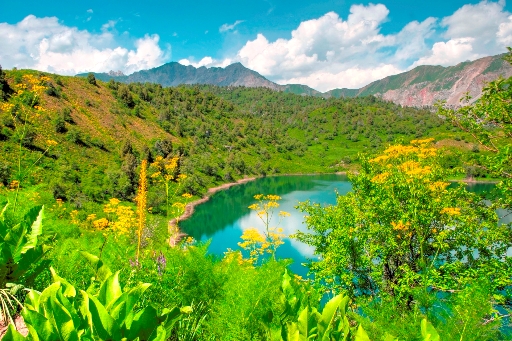Sightseeing of Kyrgyzstan
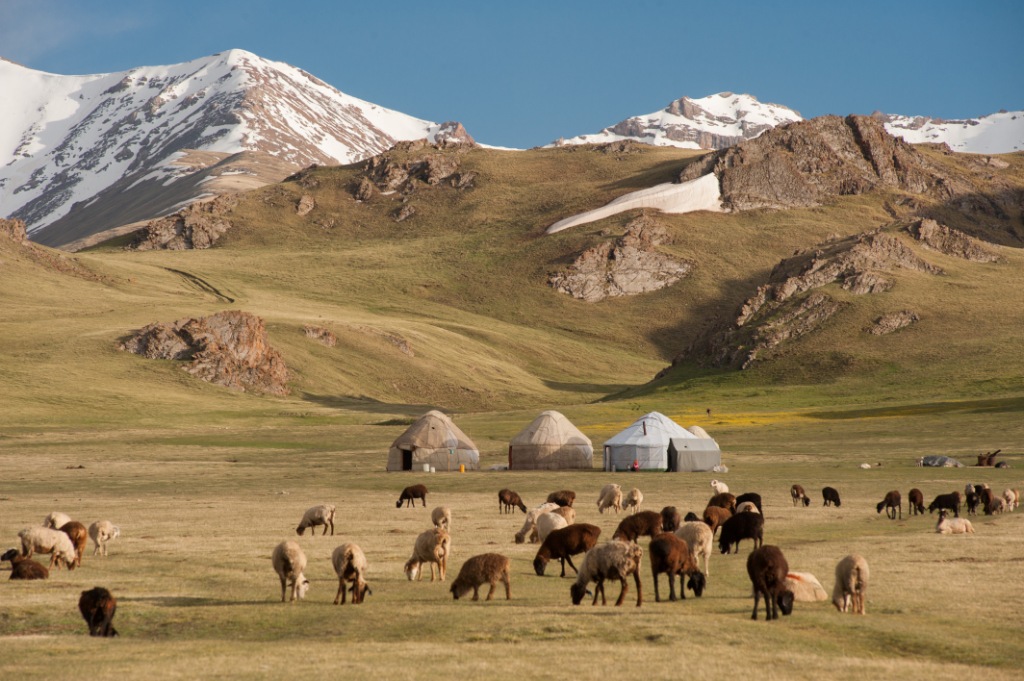
Kyrgyzstan is the mountainous country (so often referred as “Switzerland of Asia”), the average height above sea level is 2750 meters, only the south-west dipping to 394 m. At its open spaces freely spread the majestic foothills of the Tien Shan and Pamir mountains with well-known mountain peaks - peak Pobeda (7439m.) and Lenin’s Peak (7,134 m).
Exactly these two mountain ranges have turned land of Kyrgyzstan to the lands of the pristine glaciers and fast mountain rivers, colorful alpine meadows of which, amazing by variety of flora and fauna, and bursting with fertile valleys, as if beckoning to them with riot of greenery.
Remarkably beautiful mountains and unrealistic by cleanness blue lakes – these are exactly those objects which, without any doubt, would be the hallmark of tourism in Kyrgyzstan, if its land, nor even kept the other myriad wonders.
In Kyrgyzstan there are thousands of historical and cultural monuments such as: caves of primitive people, the unique runic inscriptions, the mysterious rock carvings, ruins of ancient settlements and majestic in its beauty medieval citadel.
Kyrgyzstan Administrative divisions: the country consists administratively of 7 provinces: Chui, Issyk-Kul, Naryn, Talas, Osh, Jalal-Abad and Batken. There are interesting places for visit in each provinces. For example: Bishkek is famous for its museums, parks and monuments. Chui region is famous for its ancient cities, ruins and Tower of Burana. Issyk-Kul is famous for its lake, gorges etc. Naryn is famous for its caravanserai “Tash-Rabat”, Son-Kul lake and felt-carpet shows. Osh is famous for its Suleiman Mountains with different museums and mosques.
BISHKEK is the capital of the Kyrgyz Republic was founded at the beginning of the 19th century after the Kokand conquers erected a fortress which guarded the caravan routs extending from Tashkent through the Chu Valley to Issyk-Kul and Kashgar in China. Now Bishkek is a modern city with vast squares, crowded bazaars, impressive administrative centers and educational institutions, the only large city of Kyrgyzstan. It is the political, economic, scientific and cultural centre of the country, and the main transport junction of the Republic and the Chui oblast (province). Situated in the central part of the Chui valley where the Kazakh steppe meets the majestic snow-capped Tian-Shan mountains (“Heavenly Mountains" in China, Kyrgyz call it Ala-Too “variety of colors”)., in the foothills of the Kyrgyz Ala-Too Mountains at the altitude of 700 m - 850 m. Bishkek enjoys a good climate during both the summer and winter seasons.
The very centre of the city is Ala-Too Square. The present look of the square was formed in the first half of 1980-s, when the architectural ensemble was built which comprised the Government House and the Museum of History of Communist Party, which is now the Kyrgyz State Historical Museum. Ala-Too Square is the place where all big public events and national celebrations are held.
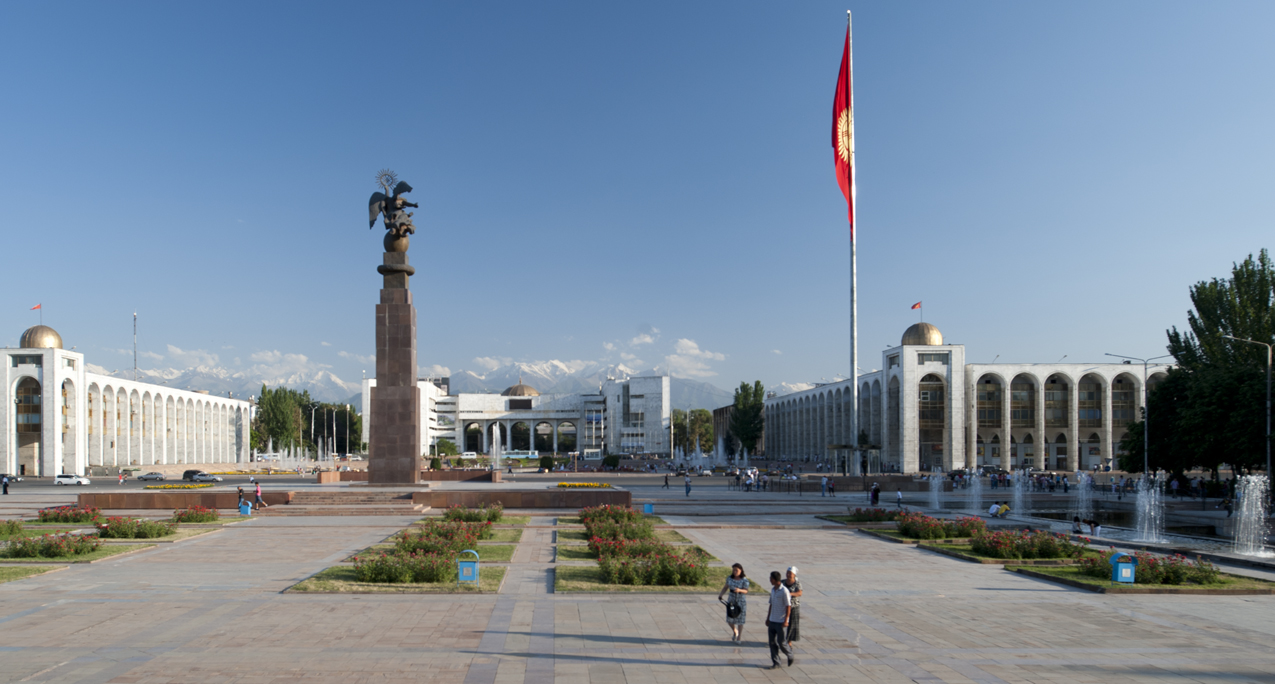
The History Museum is located on the Ala-Too central square, next to the Government House. On the first floor of the museum there is an exhibition of the president's gifts. The display of materials and documents concerning Soviet times, life and revolutionary activity of Lenin and his associates is on the second floor. And the top floor of the museum contains exhibits on history and culture of Kyrgyz since ancient times till present. Here you can see stone sculptures "balbal" from the 6th to the 8th Centuries, which represent schematic human figures, which are very unusual in their appearance. Of great interest are the materials on the Soviet era and modern history such as collections of documents, photographs, material sources, industrial product samples, collections of paintings, drawings, sculptures, foreign countries' presents to the Kyrgyz Republic. The museum keeps materials about the Republic's outstanding people and their personal things, documents and awards; collections of armory, coins and paper money are available.
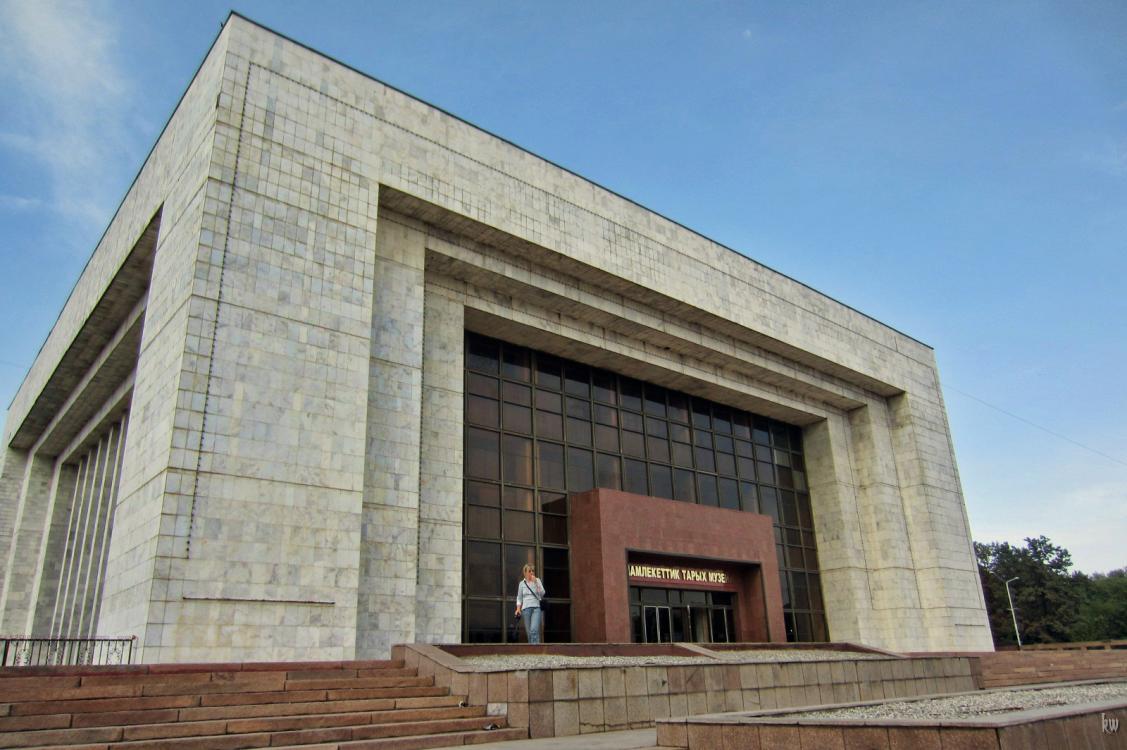
Fine Arts Museum - the museum is located on Sovetskaya Street across from the Opera and Ballet House and Bishkek Hyatt Regency Hotel. Works of Kyrgyz and Russian artists made during Soviet and post-soviet times, as well as paintings of West European artists of the last century are exhibited there. Apart from paintings, the museum contains interesting collections of felt carpets ("shirdaks"), dishes and jewelry, and reproductions of Egyptian and classical sculptures. International exhibitions are hosted by the museum every 2-3months.
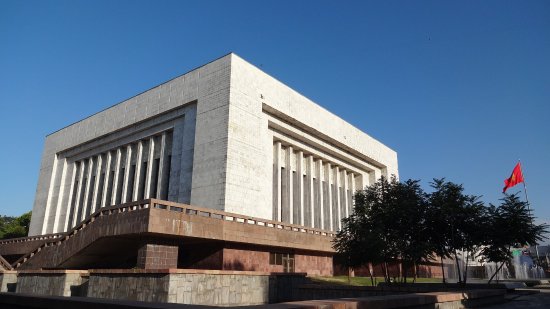
Opera and Ballet House - The construction of the theater has begun before the World War II but was completed only in 1955. The theatre is remarkable for its architecture, which was typical for the mid 1950s. The entrance of the theatre is decorated with marble portico with columns; its interior attracts by magnificent ceiling paintings and picturesque works of the Kyrgyz artists. Theatre's pediment, side terraces and bas-relieves are decorated with beautiful sculptures. The theatre is surrounded by green Victory squares.
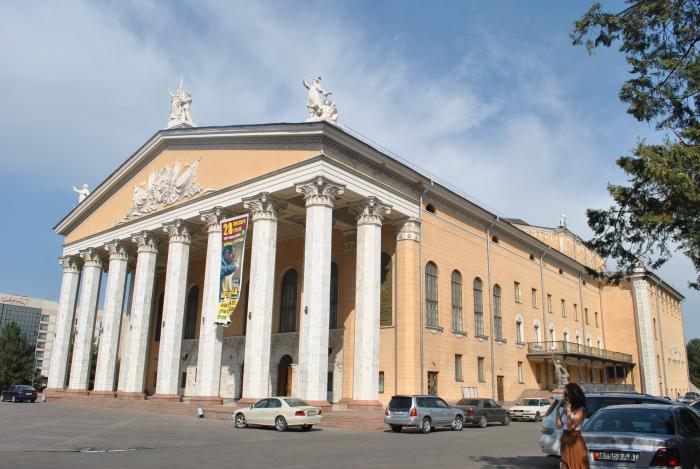
TSUM Department Store: It has several floors and is also part of the Soviet legacy of the country. You can buy all sorts of products from crafts to electronics through clothing. It is 4 floors building. The first floor you can download new ring tones for your phone, or pint out pictures from your digital camera for pennies. Also there are a lot of stalls with different perfumes. Take the escalators to the second floor for all the cool clothes and hand-bags, etc.. You can also find several stalls that sell some very interesting antiques from the Soviet Era, the books and other thinks in the 3rd floor. The 4th floor is for major appliances and souvenirs.
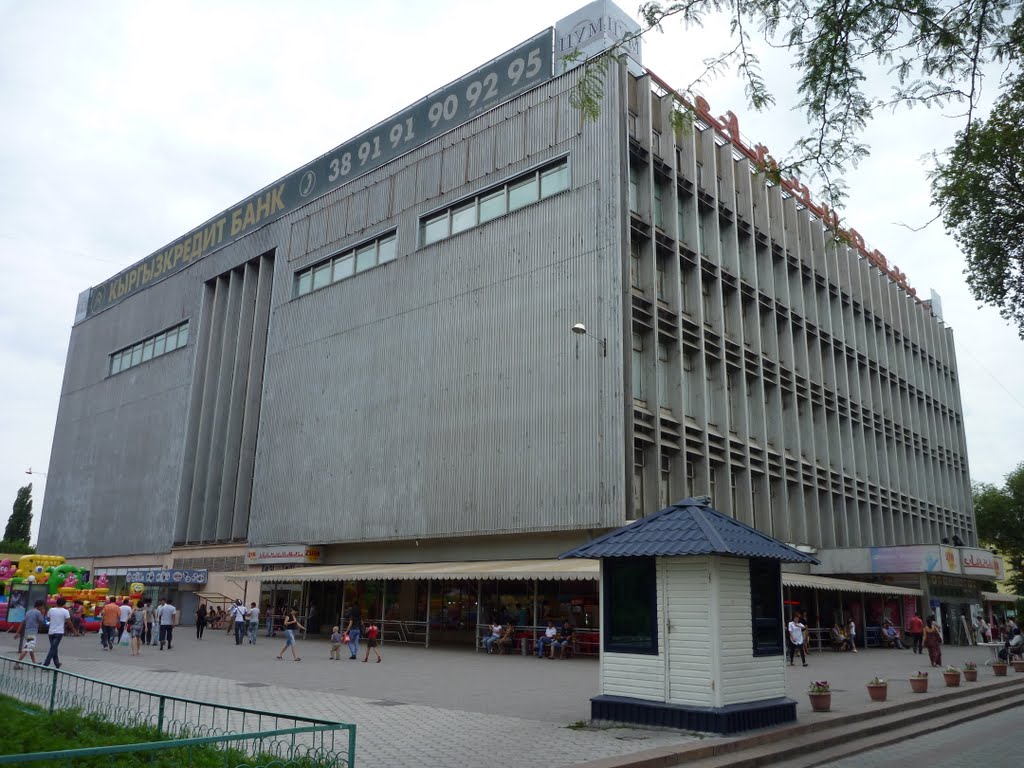
Philharmonic Hall (outside) with Manas Statue and the statues of Manaschi - Walking down the streets of Bishkek and talking to the Kyrgyz, many names are mentioned that are not at all familiar to the Westerner’s ears. The most celebrated among those names are the names of Manas and Togtogul Satilganov. Both the life of Manas and the lives of the Manaschis or bards who recite the heroic deeds of Manas are celebrated in the complex in the center of the city. The statue of Manas (completed in 1981) is placed against the backdrop of the white marble of the monumental Philharmonic building. It depicts Manas, Kyrgyzstan's legendary hero, while riding his magic steed, Ak-Kula, and slaying a dragon. Below, to his right is his wife and counselor, Kanykei, dressed in national Kyrgyz dress worn by some married women of Kyrgyzstan even today. To his left is his advisor, the sage Bakai, also in traditional Kyrgyz clothing. The Manaschis are depicted, as they would sit in the yurt and recite the deeds of the founder of the Kyrgyz nation.
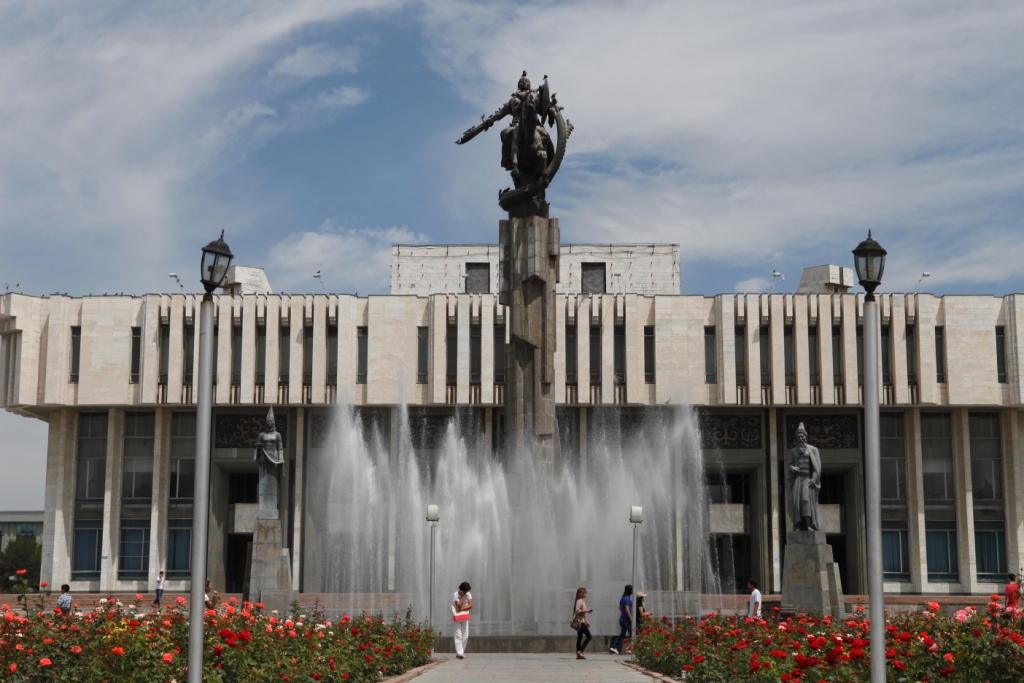
Ala-Archa National Nature park is situated 52 km away from Bishkek in the Kyrgyz Ala-Too mountain range at the height from 1600 m to 4860 m (Korona Peak), the total area of the Park is 19, 5 thousand sq. km.
The park’s best offerings are trekking and climbing in rocky, icy, spruce - clad canyons up to an elevation of almost 5000 m above the sea level, which are remote areas and require good preparation. One of the best all round routes is to the Ak-Sai canyon and Korona Peak. Korona Peak can be scaled in a day’s outing from its base camp. This requires technical equipment and skills (and ideally, a guide). Crampons, ice-axe and experience will bring you up the showing glacier surface to within 200 m of the summit, where the ice of Ak-Sai glacier starts its journey from heaven to sea in a yawing crevasse situated on the steep slope. From here there is a spectacular view of the peaks surrounding the Ak-Sai circus: Boks, Teke-Tor, Ak-Tor and Izyskatel.

Ak-Beshim ruins of ancient city Suyab of V-XIII centuries. It’s situated 5-km southwest of Staraya Pokrovka village (Chui region).
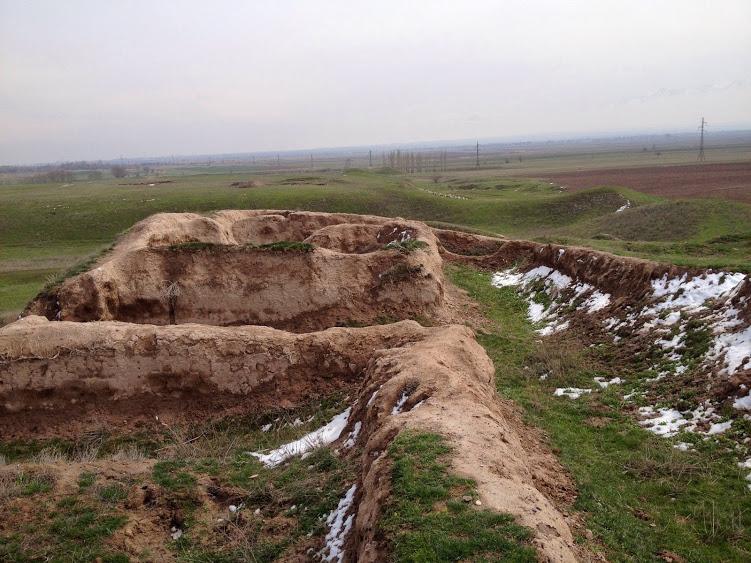
Krasnaya Rechka ruins of ancient city " Nevaket" of VI-XII centuries. It situated approximately 30-35 km far from Bishkek in Kant district.

The Burana Tower, an open-air museum built in the 11th century, is located 12 km away from Tokmok and was originally 45 m tall. The Tower is a part of the ancient city “Balasagun”, the capital of the ancient state of the Karahanides. The ruins of “Balasagun” are one of the interesting tourist sites.
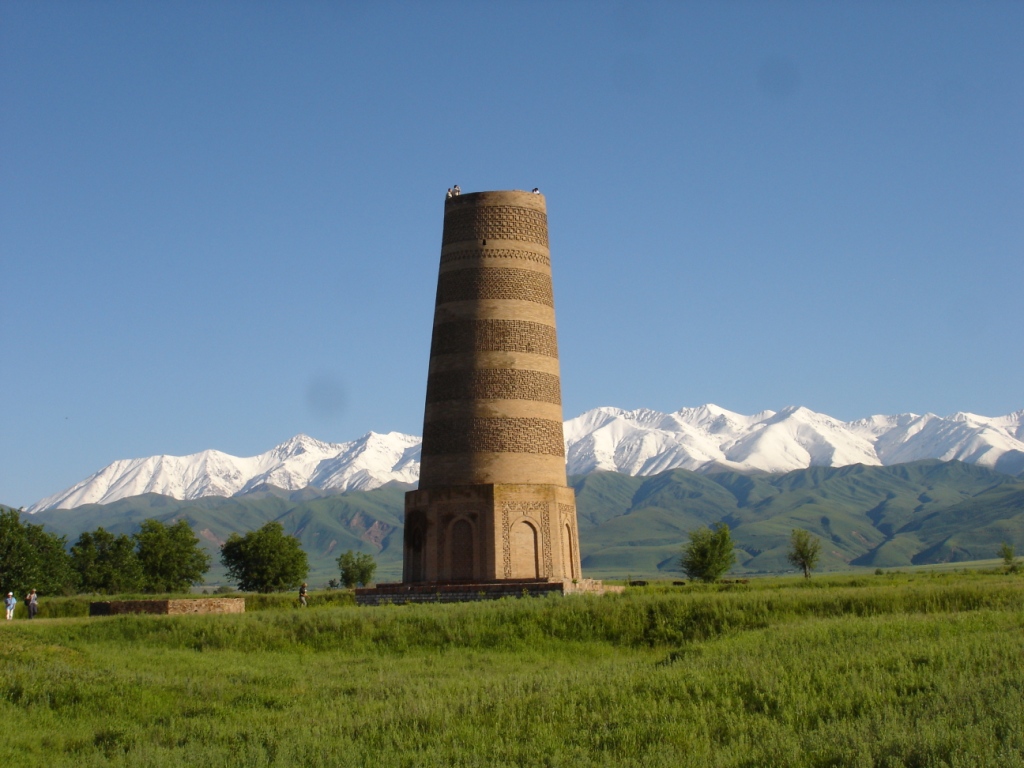
Issyk-Kul Lake occupies the Central part of the Valley created by the circle of the Terskey and Ala-Too mountain ranges. It doesn’t freeze in winter (”warm” lake in Kyrgyz). The Issyk-Kul Lake is the largest in the Tian-Shan Mountains (6,236 sq. km) and has a maximum depth of 668 m and altitude is 1609 m. Next to Lake Titicaca in South America, it is the world’s second largest lake in area.
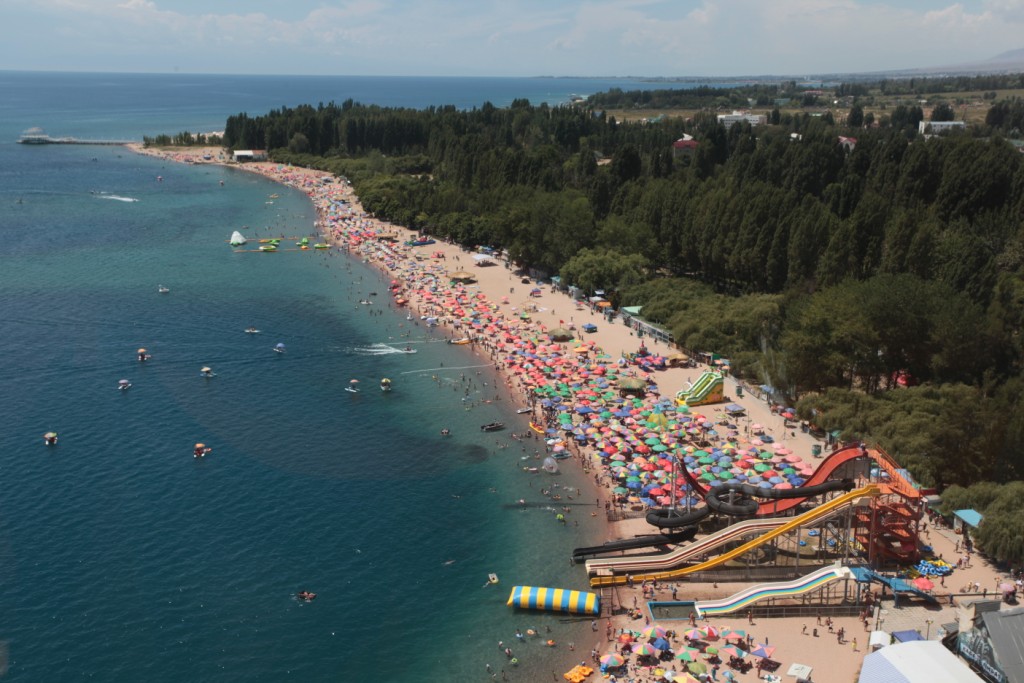
Balykchy is one of the biggest citites in Issyk-Kul region, situated at the western part of Issyk-Kul Lake. The old Soviet name was Rybachje (derived from ryba, fish) and it was called Issyk-Kul for a spell after independence.
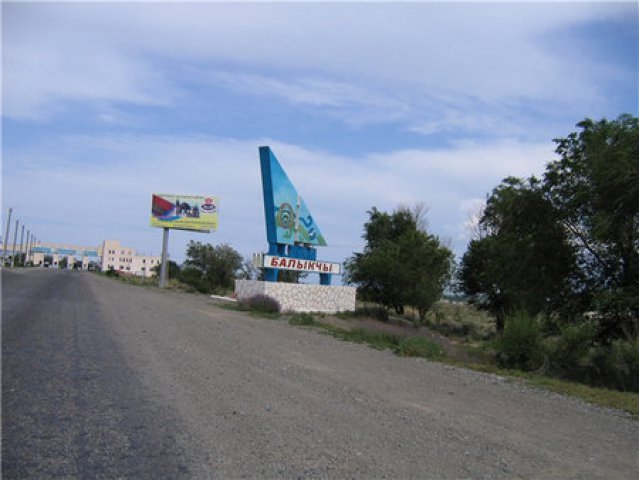
Petroglyphs of Cholpon-Ata (Cholpon-Ata’s stone inscription) The stone inscriptions of Cholpon-Ata account more than 10.000 pieces. The primitive images are mostly ibex, as well as horses (some with riders and bows) snow leopards, camels, etc., belong to the II millennium BC.
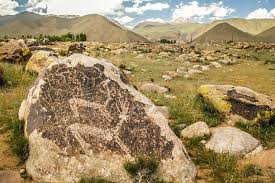
KARAKOL is situated near the eastern end of the lake Issyk-Kul and near the highest mountains (Peak Pobeda, “Tomur” in Chinese, 7439 m. and Khan - Tengri, Kan-Too in Kyrgyz 7010 M.) and the largest glacier Ynylchek in Tian-Shan Mountains. Karakol is founded at the end of the 19th century.
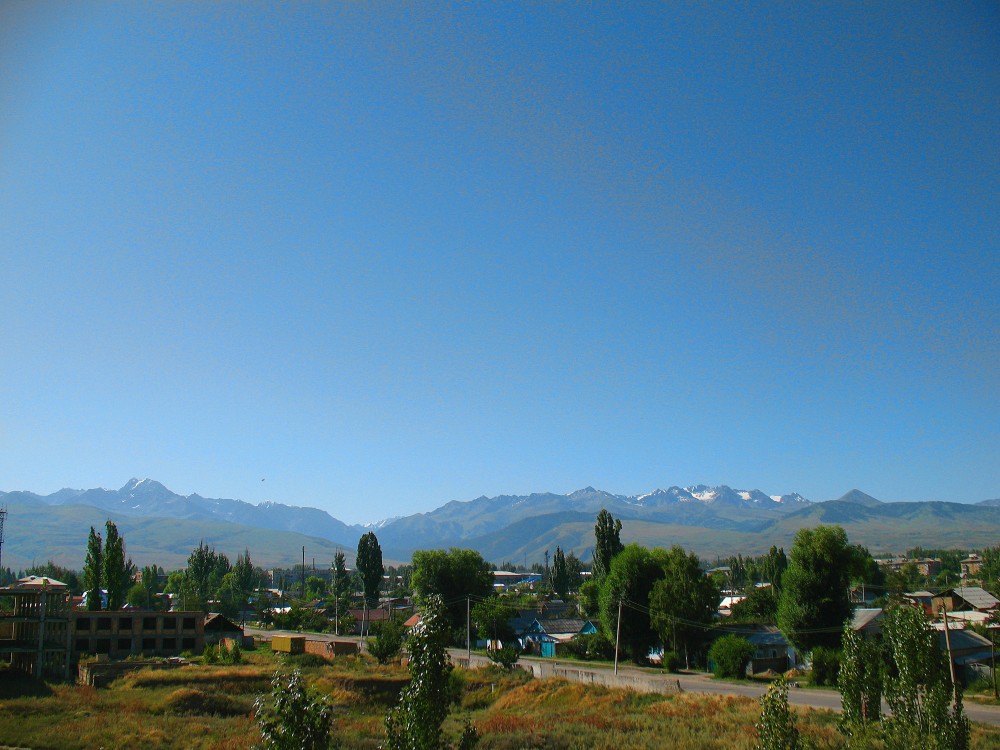
Przhevalski Memorial, Grave and Museum. Nikolai Przhevalski is the Russian explorer. His grave, a memorial park and museum are 7 km from the center of Karakol on the Mikhaylovka inlet. Przhevalski died in 1888, and a huge monument and tiny chapel were erected by his grave 6 years later. The museum and garden are Soviet creations opened in 1957, displacing the rest of a village graveyard. The grounds, reverently tended by Russian staff, are always open, though you may have to shout for the caretaker.
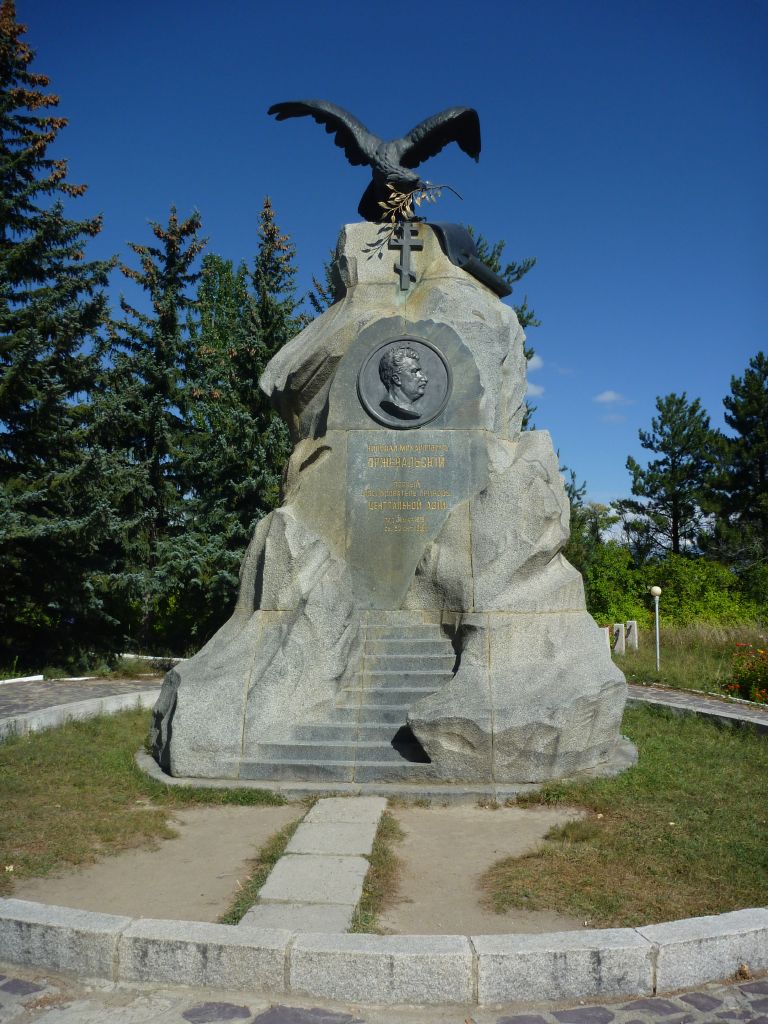
Dungan Mosque built without any nails, completed in 1910 after three years’ work by a Chinese architect and 20 Chinese artisans, for local Dungans. It was closed by the Bolsheviks from 1933 to 1943, but since then has again been a place of worship.
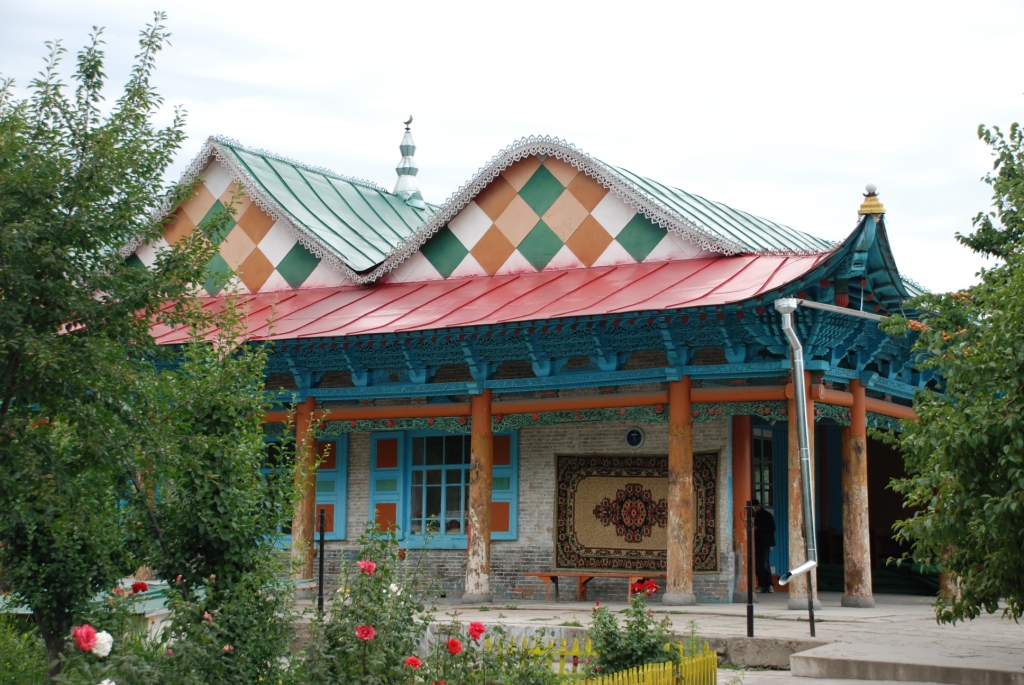
Russian Orthodox Church, a fine wooden cathedral was completed in 1895. But the Bolsheviks closed it in the 1930s, destroyed its five onion-domes and turned it into a club. Serious reconstruction only began in 1961.
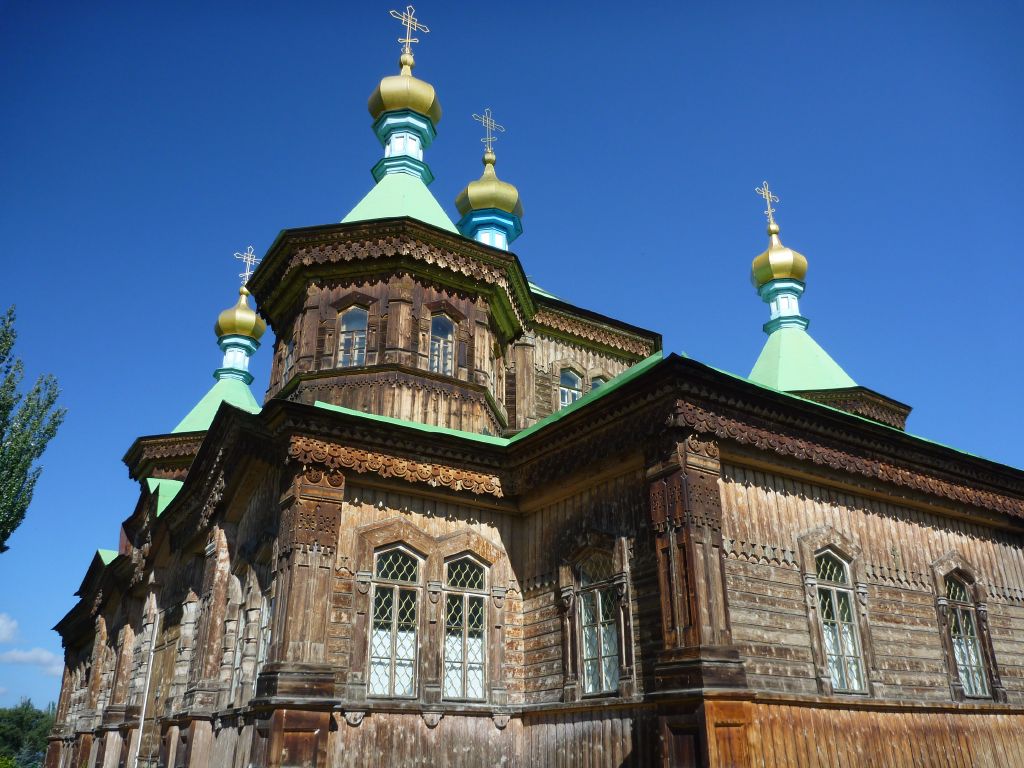
Djety-Oguz Gorge (Seven bulls):The alpine health resort “Dzehty-Oguz” lies on the river with the same name at an altitude of 2200 m in a picturesque canyon on the northern slopes of the Terskei Ala-Too Range. A broad valley surrounded by the snow-capped summits - is the most beautiful in the Northern Tien-Shan Area. The origin of Dzety-Oguz is connected with whimsical red rocks, which stand high at the very entrance of the canyon.
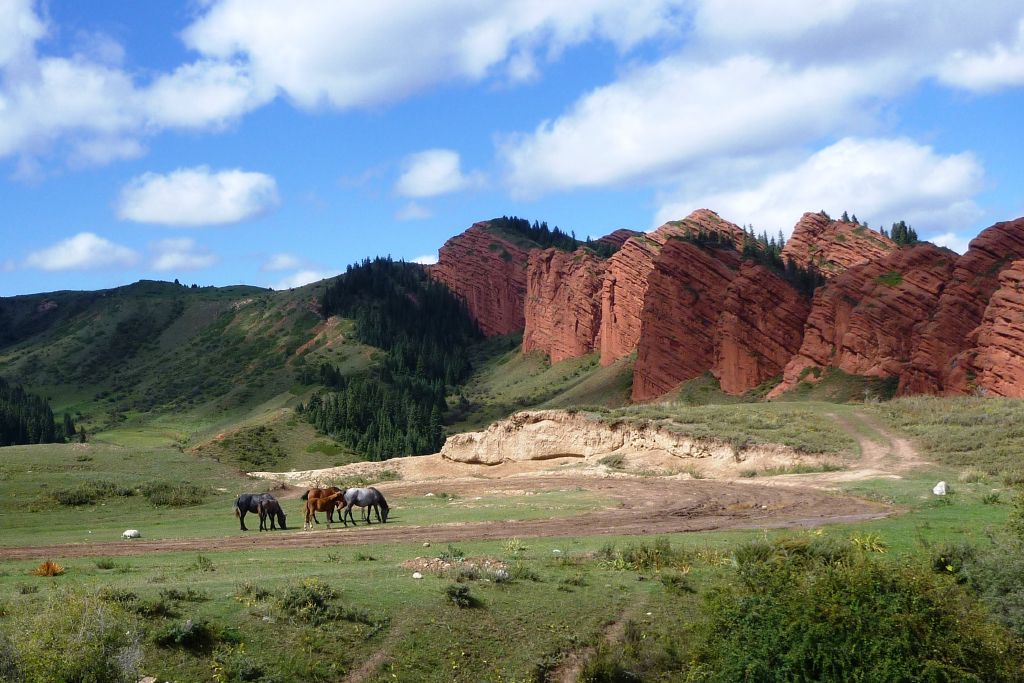
Ynylchek Glacier Of the Tian-Shan’s thousands of glaciers, the grandest is 60 km long Ynylchek (or Engilchek), rumbling westward from both sides of Khan-Tengri, embracing an entire rampart of giant peaks and tributary glaciers. Across its entire northern arm where it joins the southern one, a huge, iceberg-filled lake - Lake Merzbacher forms at 3300 m every summer, and sometimes in early August bursts its ice-banks and explodes into the Ynylchek river below.
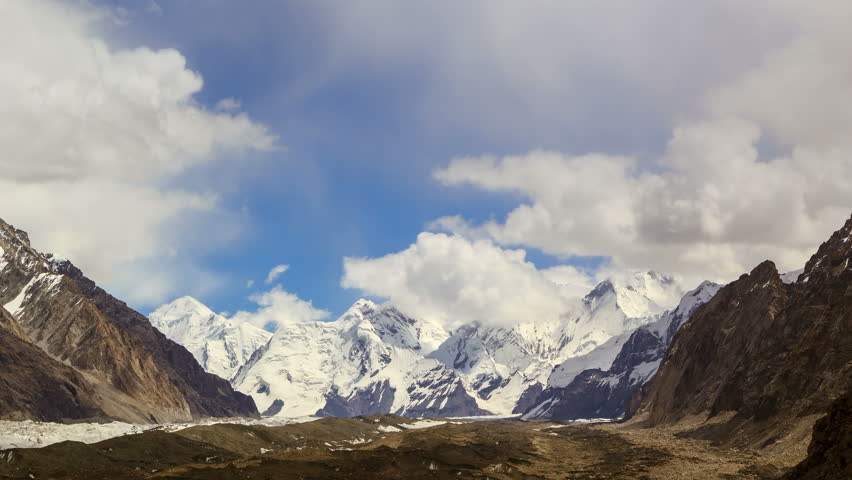
Altyn-Arashan (Golden SPA) gorge set in a postcard-perfect alpine valley at 3000 meters, with 4260 meter Pik Palatka (Tent Peak) looming at its south end. From the turn-off to Ak-Suu Sanatorium it’s an often-steep, five to six hour (14 km) climb south on a track beside the Arashan River, through a piney canyon full of hidden hot and cold springs. Much of the area is a botanical research area called the Arashan state nature reserve.
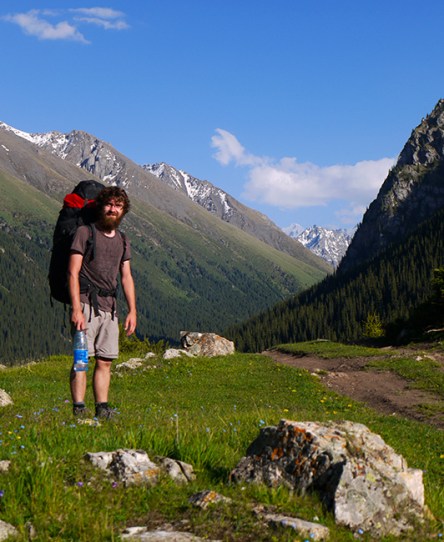
Pobeda and Khan-Tengri peaks Kyrgyzstan’s handsome marble mountains Peak Pobeda (7439 m) and Khan-Tengri Peak (6995 m) are situated close near to Inylchek valley and Inylchek glacier the longest in Tien-Shan range. Most of the ascends are made from the South face. The Peaks can be reached by helicopter flight up to the base camp.
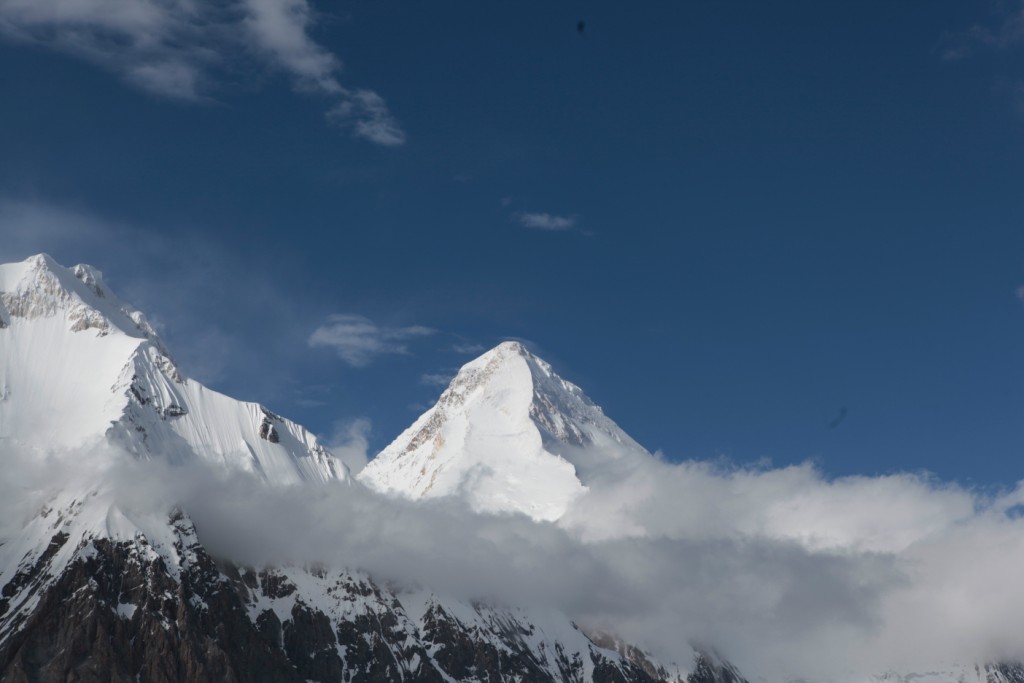
NARYN is about the right place for an overnight stop on the Bishkek-Torugart road, but it’s dismal place. A Russian border detachment and a Kyrgyz army until are based here, and the streets are full of officers and soldiers. Naryn’s one real claim to fame is that the best quality shyrdaks (traditional, brightly colored felt-appliqué rugs) in Kyrgyzstan are said to be made here.
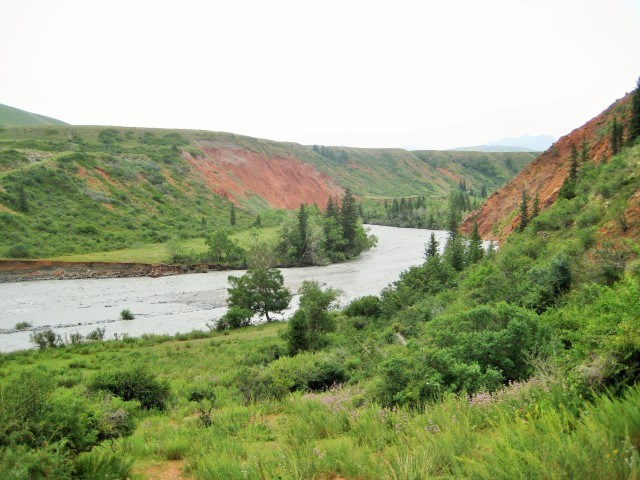
Son-Kul Lake. The second largest lake (after Issyk–Kul) lake Son–Kul is located 90 km away to the north – west from Naryn town in a high mountain desert in a valley 60 km long and 30 km wide, surrounded by a rocky Son–Kul Range (4042 M.) in the North and Moldo Too Range in the south and north-east (3900 M.) covered with Tien–Shan fur-trees. The total area of the lake is 275 sq. km, it is 15 M. deep and is situated at the height of 3016 M. above the sea - level.
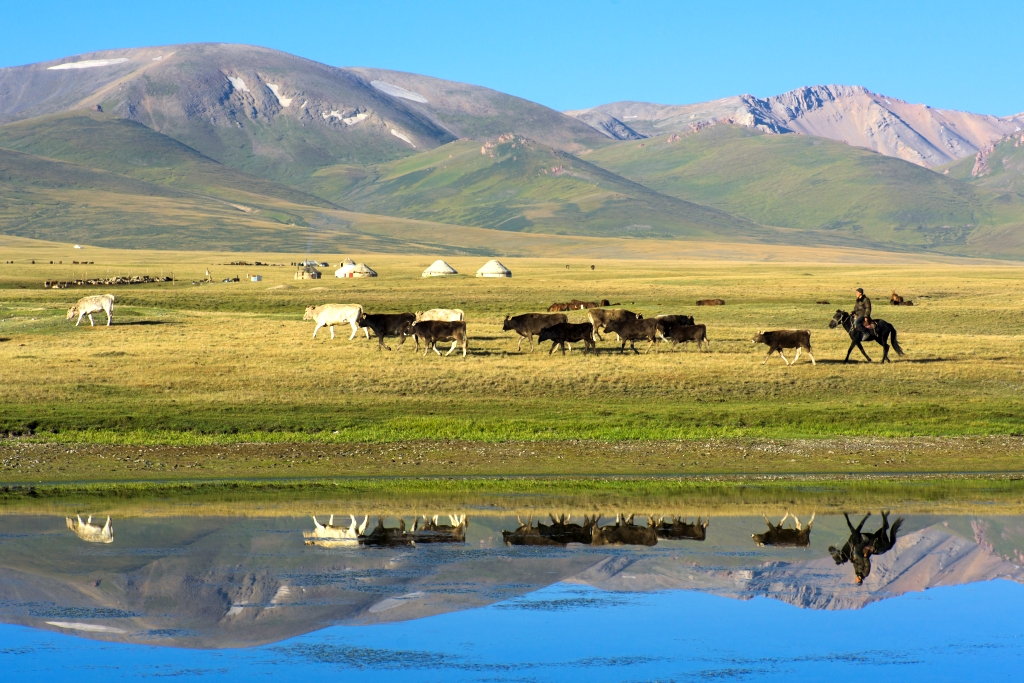
Tash-Rabat Caravansaray. The stone forest Tash–Rabat is situated at the height of more than 3000 m above the sea level 80 km from Torugart, 3752 m (China–Kyrgyz border post) and 90 km from Naryn town in Kara–Kojun Gorge of the Inner Tien–Shan. It is known as caravansary of the XV century, (the medieval inn of the merchants and travelers on the Great Silk Road). It was recently dated by the X century due to archeology and architecture research of the last years. It is supposed to be the monastery of restrain–Christians or (Buddhists) who came here before the Mongolian invasion and the spreading of Islam in Tien-Shan.
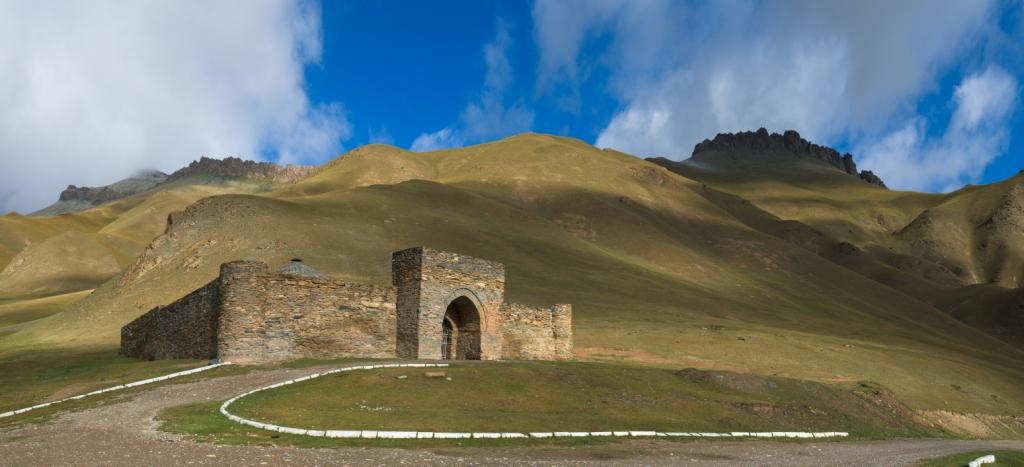
OSH is the southern capital of Kyrgyzstan, one of the oldest in the central Asia, 3000 years old, as old as Rome. The evidence of this is the four-headed sacred Suleiman Mountain in the center of the city with stone inscriptions, signs and the ancient settlement of the Iron Age on the southern slope of it. In the X century, Osh was the third city in Fergana Valley and an important point on the Great Silk Road, which led to China, India and Afghanistan.
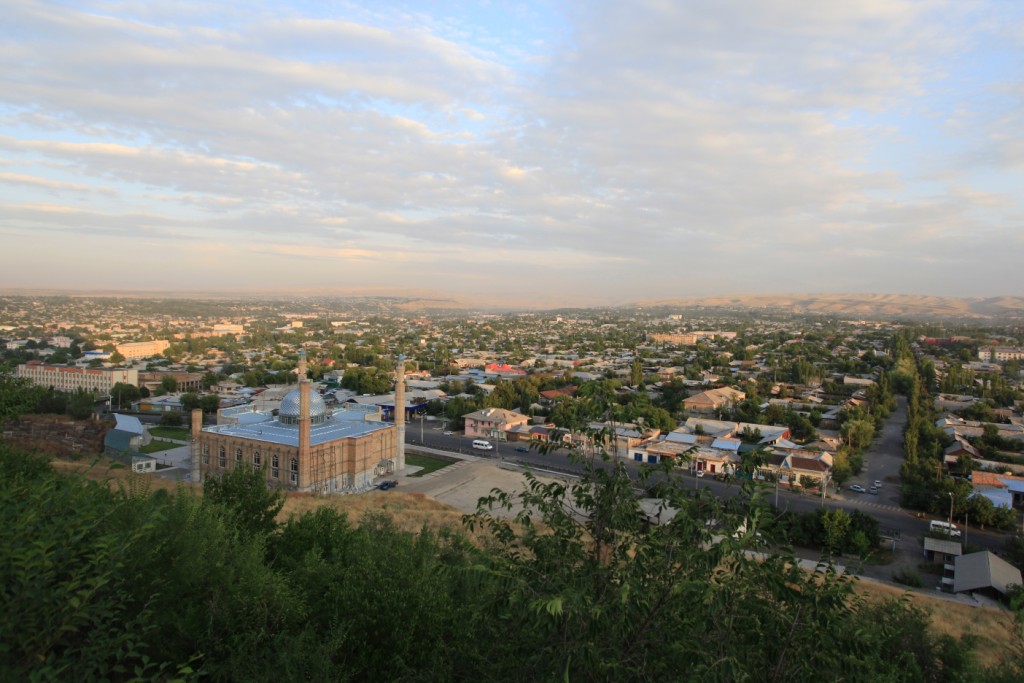
Suleiman Mountain until the XVI century Suleiman Mountains was called Bara-Kukh (“beautiful mountain”). “Taakht - I - Suleiman” (the throne of Suleiman or Solomon) is the name given to mountain when the Muslim prophet Suleiman - Sheikh was buried at the foot of it. Many centuries it was known as Mecca for Muslims and attracted thousands of pilgrims. In the caves of Suleiman mountain tourists usually visit the History Museum.
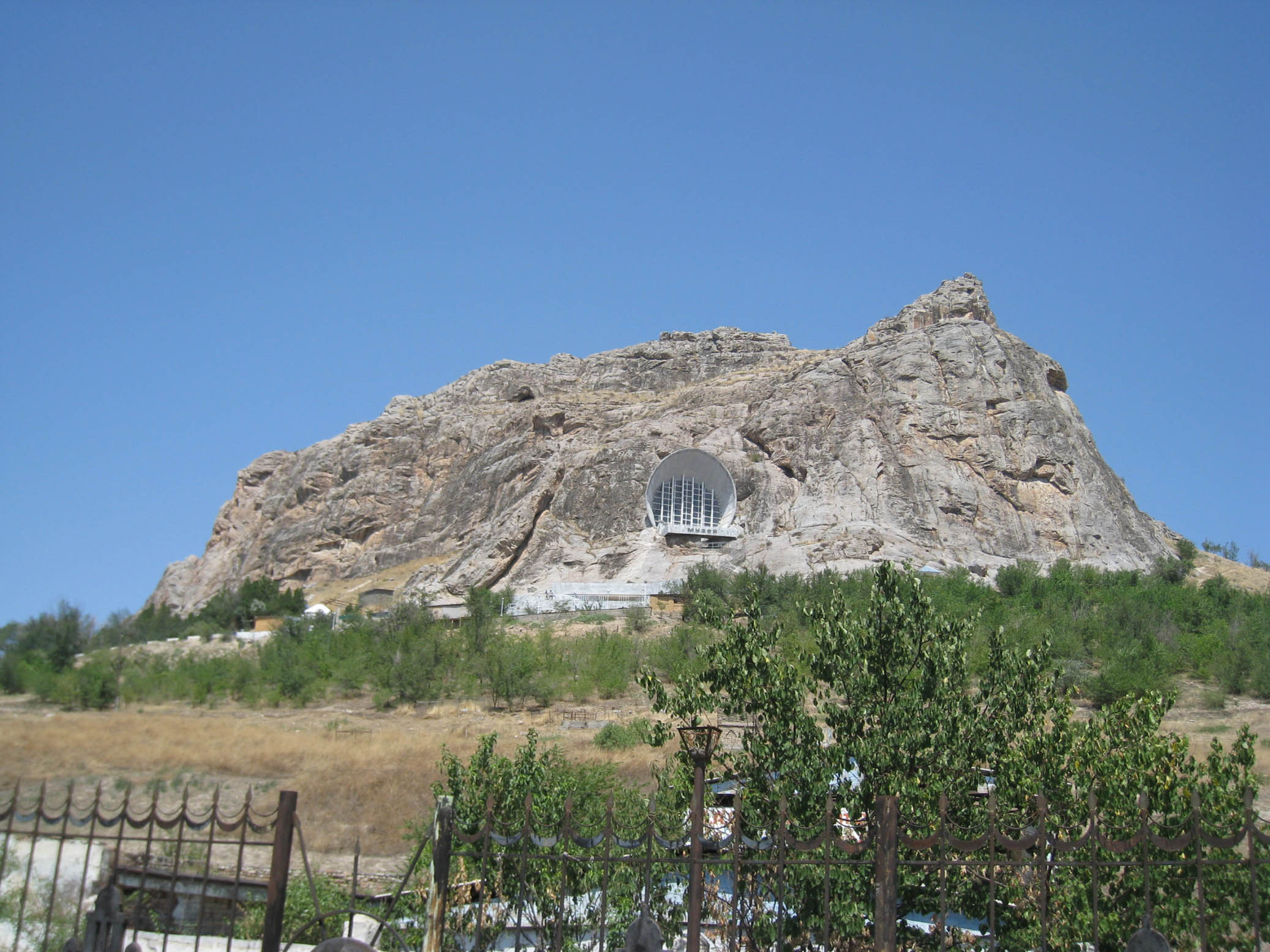
Babur’s House. Timurid's ruler Zahiriddin Muhammad Bobur (founder of Great Moghuls Dynasty in India) built a small house on one of the tops of the mountain in the XVI century and admired a nice panorama of Osh and mountains.
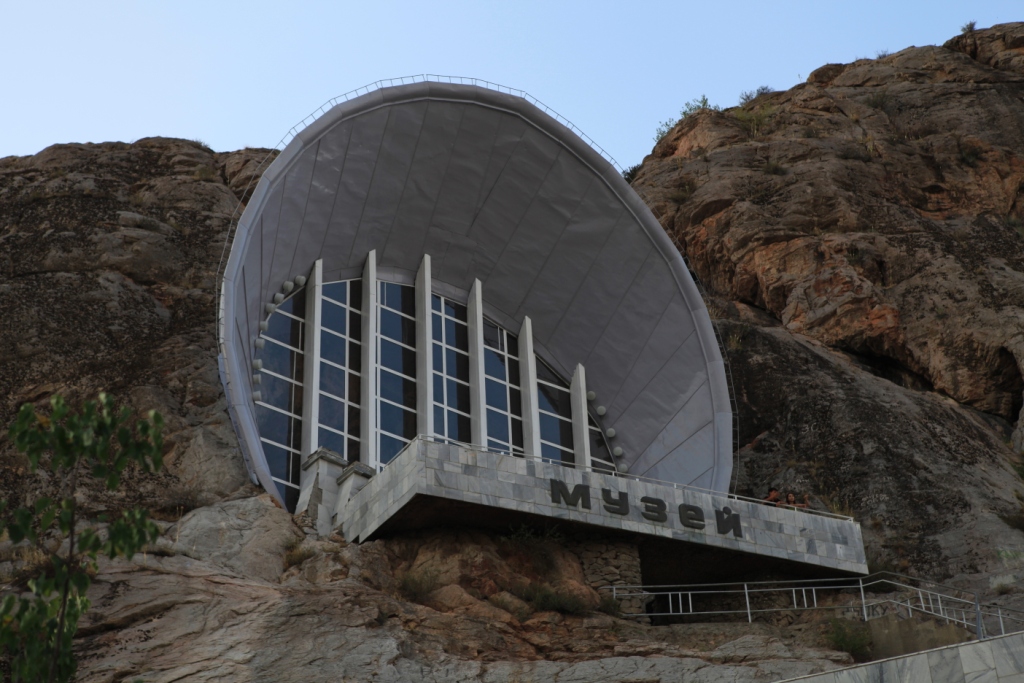
Osh bazar The Osh bazaar remains one of the largest in the Central Asia, such abundance of fruits, vegetables and oriental colors are hardly seen anywhere.
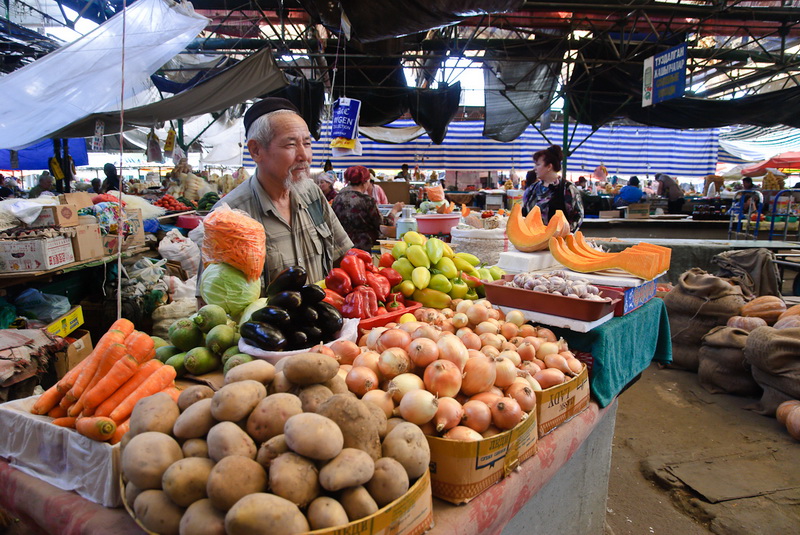
Sary-Chelek Nature Reserve The unique biosphere Nature – reserve Sary-Chelek is situated on the southern spurs of Chaktal Range in a picturesque Arkit gorge, 70 km away from Tash-Kumyr (on the Naryn River). It’s a geobotanical museum with a rare combinations of unique ancient walnut and wild fruit – tree forests of the south (wild apple-tree, pistachio, Sogdiana plum-alycha, walnuts brought from Central Asia to Greece by the warriors of Alexander the Macedonian) and the nature of the north (Tien-Shan fir-trees, archa juniper, belonging to cypresses, Semenov firs or pick Sary-Dzhaz and honeysuckle).
